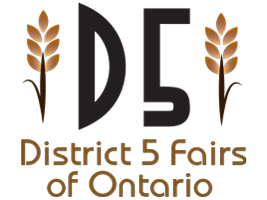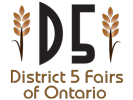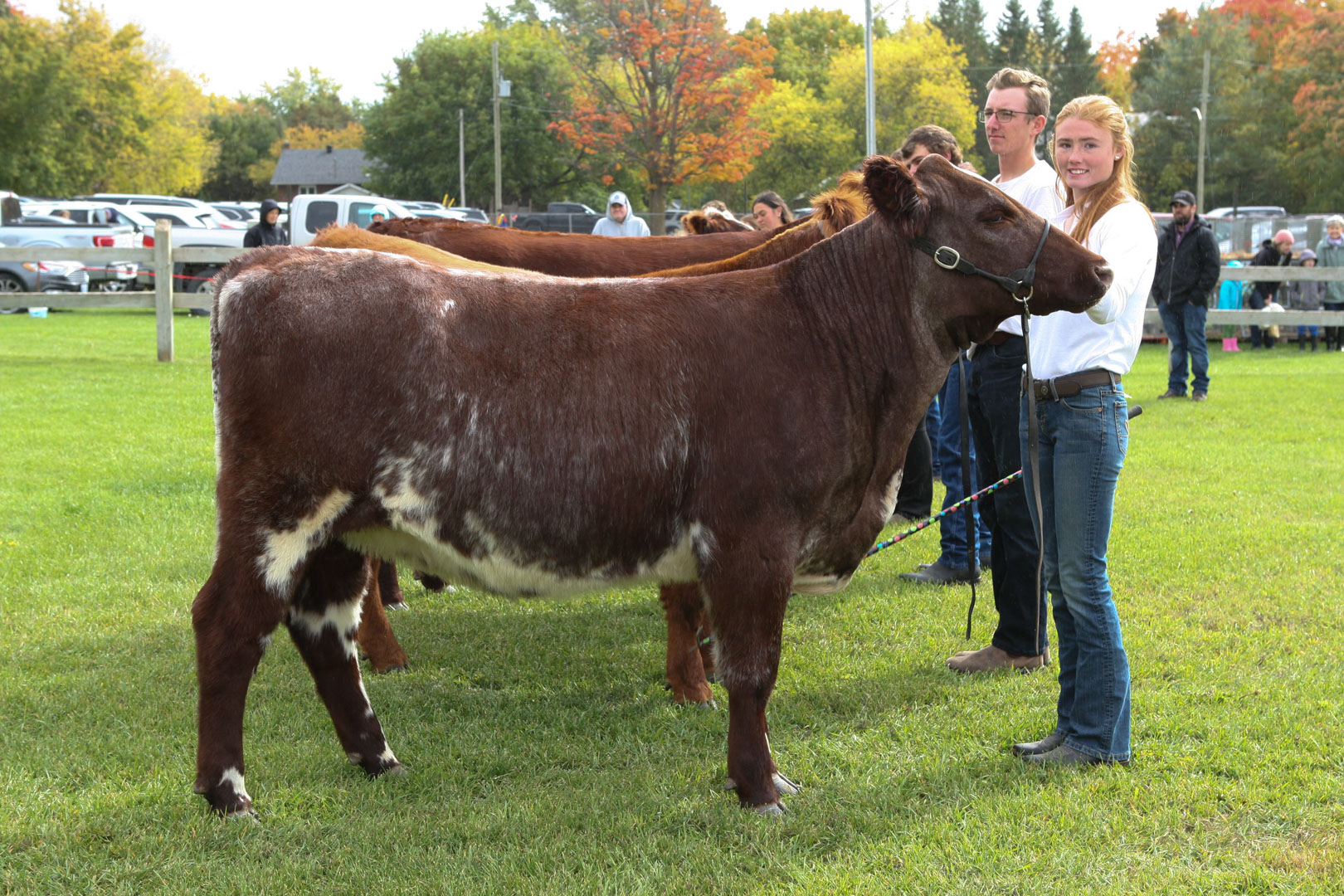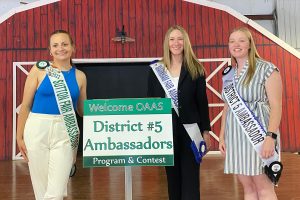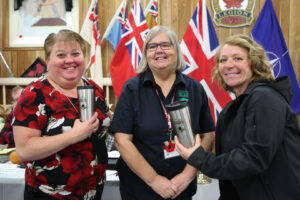Please take a couple of minutes to paste your comments on the Canada Gazette Government website. Changes are being proposed which will have an impact on our fair livestock competitions and shows.
We need all of our fair members to register individually on the Government website to challenge the proposition.
Follow the short 4 Step process below.
We need you to submit your comments because the CFIA is proposing that fairgrounds would be responsible as the intermediary site, to record animal/carcass movements to/from the fairgrounds within seven (7) days to the responsible administrator.
We propose that the movement of animals to/from fairgrounds be reported by the farm of origin. The farm of origin would also be responsible to ensure all animals sent to fairgrounds have approved intact/undamaged indicator(s).
Your action (submitting a comment) is needed.
The Canada Gazette is the official newspaper of the Government of Canada. You can learn about new statutes, new and proposed regulations. https://www.gazette.gc.ca/cg-gc/lm-sp-eng.html
The clipboard is a temporary storage area in a computer’s memory that allows you to copy and store data (text, images, files, etc.) from one location or application and paste it into another location or application. It is a handy feature for transferring data without the need to save files or retype text manually.
Here’s how to use the clipboard on different platforms:
- Windows:
- To copy: Select the content you want to copy, and then press ‘Ctrl’ + ‘C’ on your keyboard or right-click the selected content and choose ‘Copy’ from the context menu.
- To paste: Place the cursor where you want to paste the content, and then press ‘Ctrl’ + ‘V’ on your keyboard or right-click the destination and choose ‘Paste’ from the context menu.
- macOS:
- To copy: Select the content you want to copy, and then press ‘Command’ + ‘C’ on your keyboard or right-click the selected content and choose ‘Copy’ from the context menu.
- To paste: Place the cursor where you want to paste the content, and then press ‘Command’ + ‘V’ on your keyboard or right-click the destination and choose ‘Paste’ from the context menu.
- Linux:
- To copy: Select the content you want to copy, and then press ‘Ctrl’ + ‘C’ on your keyboard or right-click the selected content and choose ‘Copy’ from the context menu.
- To paste: Place the cursor where you want to paste the content, and then press ‘Ctrl’ + ‘V’ on your keyboard or right-click the destination and choose ‘Paste’ from the context menu.
- Mobile devices (iOS and Android):
- To copy: Tap and hold the content you want to copy. A context menu will appear, and then choose ‘Copy.’
- To paste: Tap and hold the destination where you want to paste the content. A context menu will appear, and then choose ‘Paste.’
Remember that the clipboard can generally store only one item at a time. If you copy something new, it will replace the previous content in the clipboard. There are clipboard manager applications available that can store multiple items and provide additional features if you need more advanced functionality.
No. You can simply copy and paste the comments from the instructions below. The comments are called “Our position statement” The comments are provided by CAFE and can be viewed on their website here: https://www.canadianfairs.ca/livestock-traceability
The Canadian Association of Fairs and Exhibitions exists to provide member organizations with a united voice, programs and tools to spur the kind of open collaboration, shared learning and coordinated action that a vibrant sector needs to thrive.
How To Submit Your Comments
We need your help. Please submit your comments. We’ve made it really easy. All you need to do is copy some text which was written for you by CAFE, then paste it on the Government website. Follow our step-by-step instructions to submit comments to the Canada Gazette. This is the most important part, and requires as much participation as possible.
Steps to submit comments (Our position statement)
Step 1 - Copy The Comments
Our position statement
Canadian fairs, exhibitions and agricultural societies’ response to the proposed amendments in the Canada Gazette re: Part XV of the Health of Animals Regulations
Fairs, exhibitions, agricultural societies and their provincial and national associations would like to submit feedback in regards to the proposed amendments to Part XV of the Health of Animals Regulations. According to the CFIA, the objective of the national Livestock Identification and Traceability program is to “provide accurate and up-to-date livestock identity, movement and location information to mitigate the impact of disease outbreaks, food safety issues and natural disasters.” First and foremost, we would like to express our full support for the program and its objectives. Traceability is a critical component of a successful Canadian agricultural landscape, necessary to ensure the health and safety of our animals, food and citizens. We are pleased to support this by ensuring we have a valid Premise Identification Number, registering our properties accordingly, and working collaboratively with CFIA and AAFC as much as possible to ensure participation of all those who are present on our site. However, the proposed changes place a significantly increased burden on our industry; a load which we simply cannot bear. If the goal of the proposed regulatory amendments is to “improve Canada’s traceability system by strengthening the availability and accuracy of information on the domestic movement of animals and harmonize requirements across all species,” the proposed amendments as they read now will ultimately fail at this goal in regards to our intermediary sites (fairgrounds). THE RATIONALE As it currently stands, only 29% of fairs, exhibitions and agricultural societies currently have enough people to run their animal shows and events. 83% of people involved in shows and events with animals are volunteers, dedicating an estimated 844,000 hours annually across Canada to these programs. We are the only intermediary site that relies on volunteers and therefore faces unique challenges. For several years, we have been challenged with finding enough volunteers and staff to do the tasks already required to run these events, and these people are often putting in incredibly long hours and taking on multiple tasks to ensure the events run successfully, on top of their day jobs and personal obligations. As well, in a volunteer-led atmosphere, knowledge sharing and transfer is spotty at best due to other obligations, unexpected and frequent turnover or lack of experience in knowledge transfer protocols. We do not have the time or the people power to take on new reporting obligations, no matter how simple they may be. Furthermore, 79% of fairs, exhibitions and agricultural societies do not have adequate facilities to store equipment or tags. This is due to the volunteer nature and seasonality of our industry and buildings. Facilities are not winterized because the majority are often only used in the summer months, and volunteers store materials in personal spaces, which is functional but not efficient, particularly when materials need to be shared, transferred or succession takes place. As well, fairgrounds rent their facilities to other organizations that host animal activities (4-H, auctions, etc.) where the grounds owners (fairs, exhibitions and agricultural societies) have a hands-off approach during the rented event, giving the organizers reasonably open access to host their program. These amendments would place an increased administrative burden on the grounds owners, and would have them imposing on the renter’s administration processes. This will ultimately leave both parties frustrated while increasing their workloads, and will likely result in the grounds owners reducing the amount of rentals they offer to animal programs for the sake of ease. As a result of the points above, more than ¾ of fairs, exhibitions and agricultural societies surveyed say they will be negatively impacted by the proposed requirements, and will subsequently have to cancel shows or have reported they may not be compliant with Part XV of the Health of Animals Regulations. Not only does this put the livestock traceability program in jeopardy, but it puts more than 5,000 animal events at risk, with more than half involving 4-H or youth. The Guelph Statement indicates that in building sector capacity, one of the goals is to foster the next generation of farmers. Arguably, one of the best ways to do this is to engage youth in 4-H programs and animal shows. Putting these shows at risk therefore jeopardizes future generations of agriculture in Canada. The Guelph Statement also indicates that “fostering awareness of sector commitment to the sustainable production of safe, high-quality food and building public trust while increasing sector awareness of the expectations of consumers” is a focus area as part of the 2028 vision. Our events see 35 million visitors each year to their exhibitions, rodeos, fairs and other special events. Most of these events have an agricultural component and the majority of visitors are there to learn about agriculture. It is undeniable that with the diverse audiences we see in both rural and urban settings as a leisure activity for people of all ages, that this is one of the best avenues to build public trust in Canadian agriculture. The visitors are keen and willing to learn, looking forward to specifically learning about agriculture first-hand. Fairs, exhibitions and agricultural societies were founded with the mission to support agricultural education and the majority still carry this as part of their mission and vision. Based on a 2008 study, we also know that: 42% of visitors want to learn more about agriculture and the environment at fairs and exhibitions 43% of visitors say “fairs are one of the only places where children learn about agriculture and food” The main reason most people visit a fair or exhibition is to interact with the agriculture Fairs historically have provided opportunities for producers to market their purebred livestock to local, national and international markets benefitting the livestock industry. Putting the burden (financially or volunteer hours) for these costs on agricultural societies instead of the livestock industry/producers could lead to less livestock shows and opportunities to market livestock as well as promote agriculture, local food and the livestock industry to the general public. Losing this avenue to positively showcase livestock production to the general public could have negative effects on the public/consumers perception of the production of various livestock products. Supporting the Guelph Statement means ensuring the vitality of fairs, exhibitions, and agricultural societies to support their mission of agricultural education. For these reasons, we have proposed a series of alternatives to the amendments in question for consideration, in the spirit of significantly increasing the chance of accomplishing the CFIA’s goals and objectives. ANIMAL MOVEMENT The CFIA is proposing that fairgrounds would be responsible as the intermediary site, to record animal/carcass movements to/from the fairgrounds within seven (7) days to the responsible administrator. We propose that the movement of animals to/from fairgrounds be reported by the farm of origin. The farm of origin would also be responsible to ensure all animals sent to fairgrounds have approved intact/undamaged indicator(s). In a survey to exhibitors (producers who exhibit animals at fairgrounds) completed in the summer of 2022, ⅔ (66%) of exhibitors reported they would be willing to be responsible for reporting their animal movements to/from the fairgrounds if the process was simple and direct. Not only would this streamline the process as producers are already familiar with reporting systems (applications, software, websites, paper forms) as they use them daily or weekly versus annually as we would , but it would help reduce red tape for the fairs, exhibitions and agricultural societies, another focus of the Guelph Statement. TAGGING Current regulations stipulate if our intermediary sites receive animals that do not bear an approved indicator or that bear a revoked indicator, we must: – apply a new approved indicator to the animal; report the identification – number of the new approved indicator and the number of the previously approved indicator to the responsible administrator within 7 days of the new approved indicator being applied. Approved indicators applied at intermediate site such as auction marts, fairs or assembly yards must be issued to that site. The CFIA is also proposing that fairgrounds will no longer be eligible to apply for “tagging site” status, which would allow the facilities to apply tags from the farm of origin. We propose that the owner/farm of origin is responsible for providing and applying approved indicators, issued to the farm of origin (not the fairgrounds/intermediary site), to be applied to animals should a tag be lost or removed while on the intermediary site (fairgrounds), particularly as in the majority of cases, the animal is returning to the farm of origin rather than moving to another destination. In a survey to exhibitors (producers who exhibit animals at fairgrounds) completed in the summer of 2022, 90% of exhibitors agreed they do NOT want the intermediary site (fairground) tagging their animal with an intermediary site tag. Another 5% reported they were unsure about the concept. Furthermore, of the people involved in animal shows and events at fairgrounds, almost half (45%) lack the necessary experience to work with animals, 64% lack tagging experience and only 11% have the necessary facilities and equipment to safely tag livestock. It is not practical nor safe for our facilities to be responsible for animal tagging. We are willing to enforce proper tagging protocols by ensuring all animals who arrive onsite have tags and by restricting participation until animals are properly tagged, however the liability related to being responsible for tagging is not something we are comfortable or willing to take on. SUMMARY In conclusion, fairs, exhibitions and agricultural societies support the goals and objectives of the Livestock Traceability program, and would like to be a part of the solution. By implementing the proposed changes listed here, we are confident the program will be poised for success. To discuss further, feel free to contact any provincial representative or the Canadian Association of Fairs and Exhibitions.
Step 2 - Go to the Canada Gazette
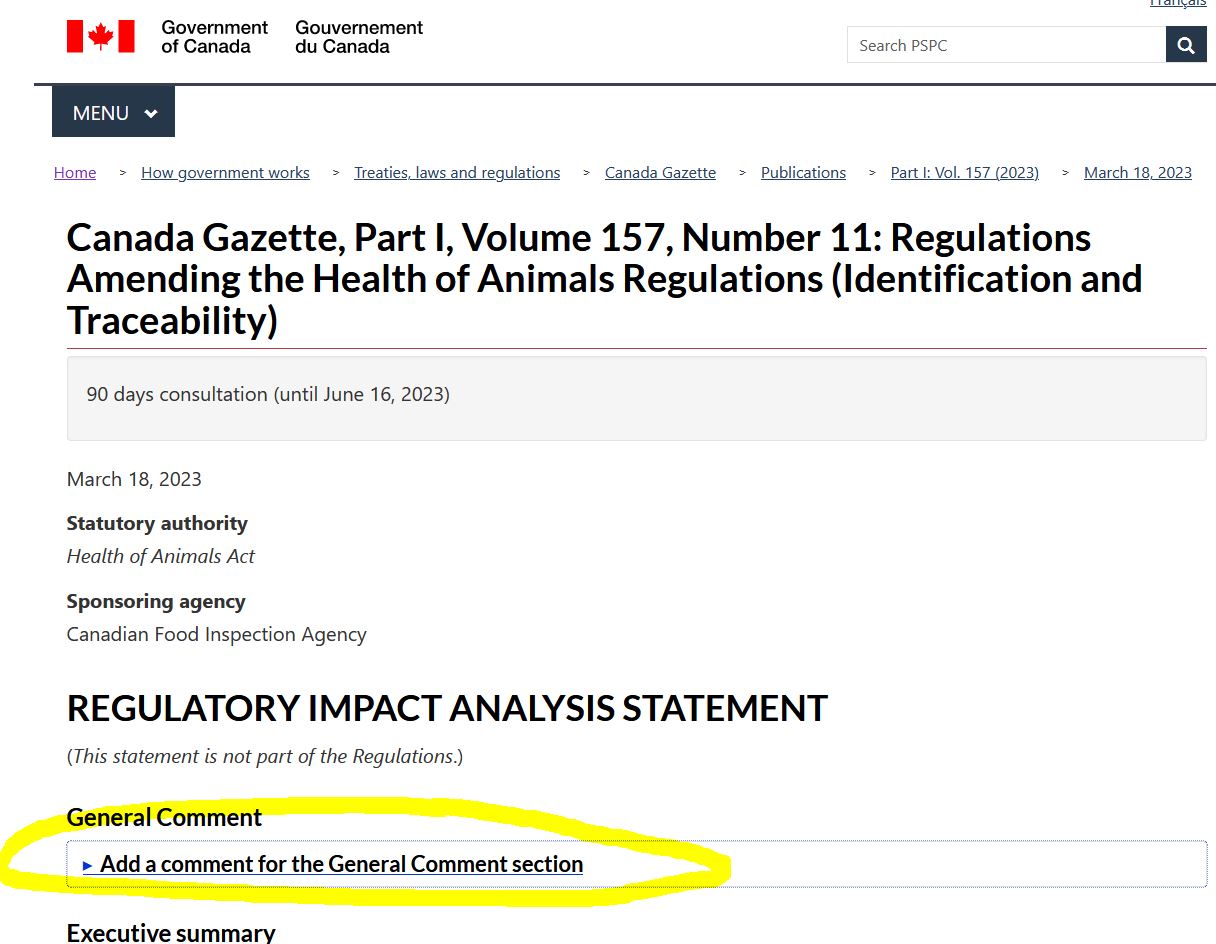
Step 3 - Paste the Clipboard
In the General Comment comment field, paste the text from you clipboard. Point your mouse cursor inside the box where it says “Please enter your comments here.”
Press Ctrl+V on your keyboard.
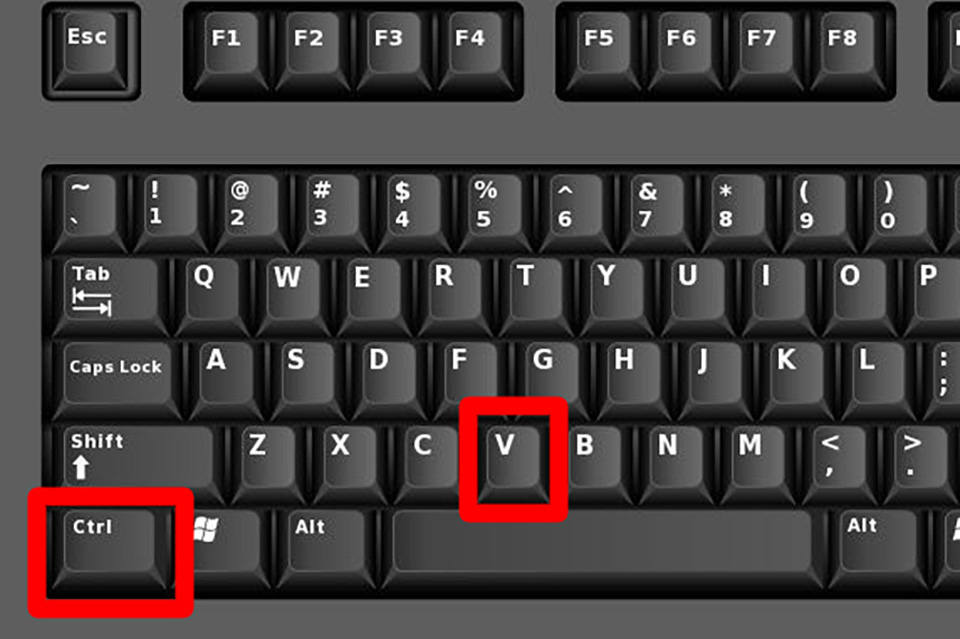
Step 4 - Complete the Registration Process
Continue on the Canada Gazette website to review and submit your comments. Complete your contact information. You will receive a confirmation message when your comment has been successfully submitted.
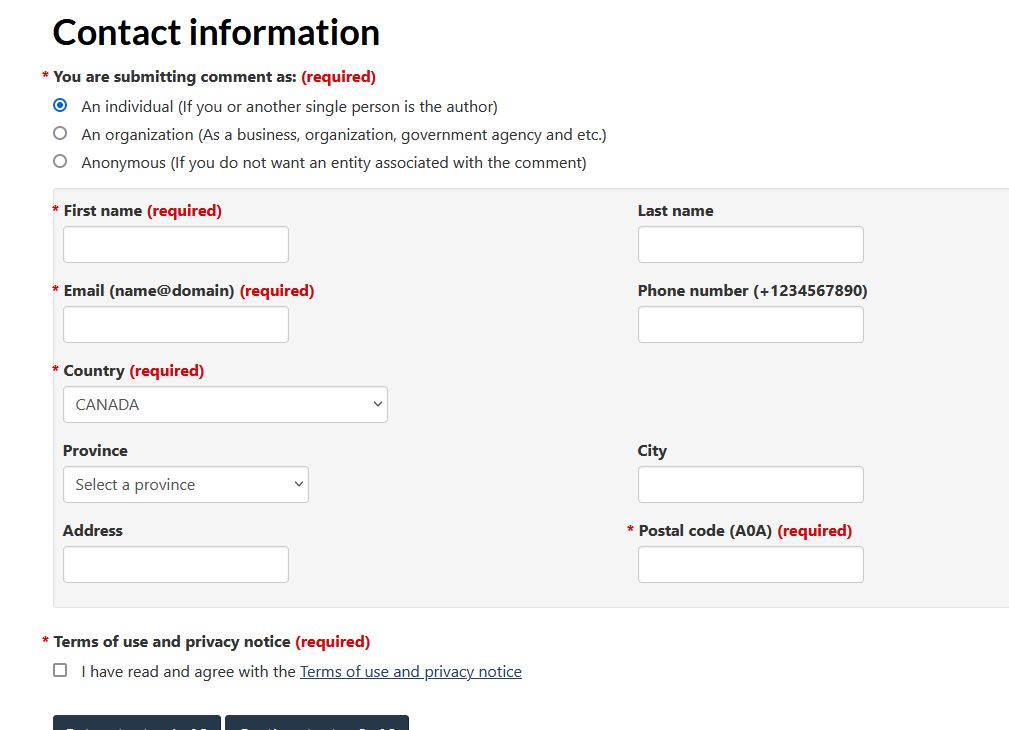
Livestock Traceability highlights, April 14, 2023
CFIA has recently released details of proposed modifications to the current Livestock Traceability regulations – PART XV of the Health of Animals (Identification and Traceability). The OAAS, and our national and provincial partners, have several concerns about the current and proposed regulations but the section of the proposed regulations that we feel will have the most significant effect on our agricultural societies and their volunteer workload is related to animal movement.
